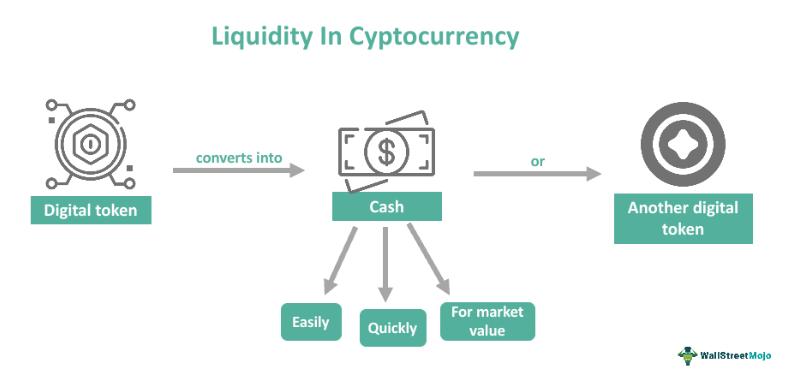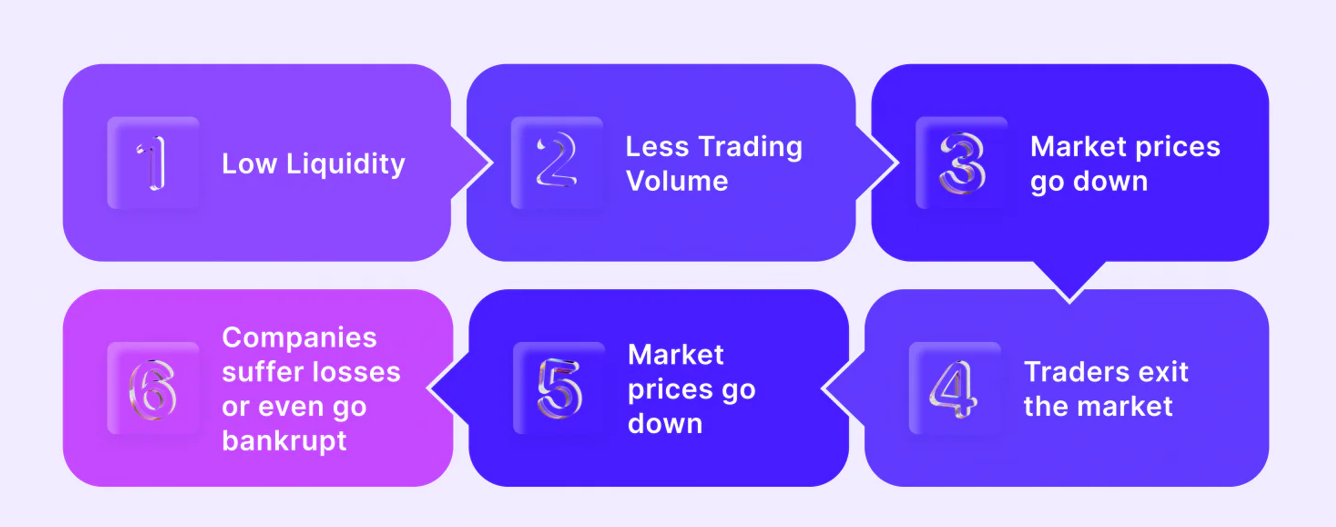Liquidity in Crypto: The Foundation of a Healthy Trading Market

What Is Liquidity in Cryptocurrency?
When a digital asset is liquid, it means that it can be swiftly transformed into cash or other assets without substantially altering its market worth. When seeking to define how easily an asset can be traded on the market, this turns out to be the simplest articulation of that idea. Meaning that there is strong trading with many buyers and sellers in the market, high liquidity is an indicator of this. As a result, investors are able to buy or depart from positions without delay thanks to simply enabling faster transactions, less volatility and lower transaction fees.

Liquidity in Cryptocurrency (Source: wallstreetmojo.com)
Why Liquidity Matters on Crypto Exchanges
Liquidity plays a pivotal role in the functionality and reliability of cryptocurrency markets. Here are the key reasons why liquidity is essential:
1. Stability in Pricing: Large buy or sell orders are not expected to shift the pricing by a lot if there is ample liquidity. This consistency shifts the prices more softly and thus ensures that investors are more willing to enter the markets.
2. Ease of Execution: Trade is completed swiftly with perfect pricing, meaning that the fees and slippage are almost absent. A good example would be CoinSpot, a well-renowned trading platform in Australia, which enables traders to have a smooth trade experience as it is liquid enough.
3. Credibility of the Market: When choosing an exchange, traders usually prefer the one with high liquidity because it is generally considered more reliable and trustworthy. The larger the trust exchange, the more people join the community, which further supports the growth of the cryptocurrency ecosystem
4. Assessing the State of the Market: Liquidity significantly indicates how healthy the market is. If markets are faced with low liquidity, they are also threatened with high volatility, which makes it hard for an investor to trade or predict stable prices.
5. Value of the Token: For any new cryptocurrency to be valuable, it needs to have liquidity so that it can be used across the different platforms. If this is not sufficiently provided, then the value of the token will prove insignificant in the eyes of users.
How to assess Liquidity in Cryptocurrencies
From a practical standpoint, a value should be determined in a bid-ask spread because liquidity can’t be defined. Important values for the characteristic are:
Bid-Ask Spread
It is the distance between the highest asking price and the lowest buying price. The lower the number, the higher the liquidity spread and vice versa, the higher the spread, the higher the liquidity spread, which all increase transaction costs.
Trading Volume
This is the total quantity of an asset that is exchanged in a specified time interval. High trading volumes give rise to high transaction markets, thereby increasing liquidity, but with low volumes, the markets become less liquid.
Market Size
The crypto market is expanding but it is still less than the conventional financial markets. For instance, 2 trillion dollars is how much cryptocurrencies have altogether market capitalization wise, whereas equities or gold markets are over 10 times greater.

Liquidity is a key factor in the market (Source: b2broker.com)
Factors Influencing Liquidity in Crypto Markets
Several factors shape liquidity in cryptocurrency exchanges:
Assessments of an exchange’s liquidity should focus on such metrics as customer base, bid-ask spread, and trading volume. For example, CoinSpot has received commendations over its huge user and trading volume, which makes the exchange suitable for both novice and expert traders.
Get a better understanding of liquidity and its effects on crypto markets so as to make better navigation of the crypto world.



